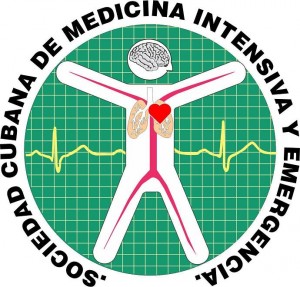Clinical-epidemiological behavior of malaria in an Angolan hospital
Keywords:
malaria/sex and age group, malaria/mortality, malaria/complications, mortality, AngolaAbstract
Introduction: Malaria is a parasitic disease with the highest morbidity and mortality in the world.
Objective: To determine the epidemiological clinical behavior of malaria in an Angolan hospital.
Methods: A cross-sectional study was carried out with all the patients discharged with diagnosis of malaria (N = 1535), at Lobito General Hospital, Benguela, Angola, from 2015 to 2019. They were grouped by living or deceased patients. The studied variables were age, sex, comorbidities, complications and mortality. For the statistical analysis, the absolute frequency, the percentage and the absolute risk were used.
Results: Female sex (61%) and the age group of 25 to 35 years (29%) predominated in this study. In reference to comorbidity, AIDS had the highest incidence (64.1%), followed by pulmonary tuberculosis (59.9%). As for the distribution according to origin, the highest number of admitted patients was found in emergency services (28.8%), followed by public medical posts (23.2%). The most frequent complications were hypoglycemia (29.6%), followed by hemolytic anemia (26.1%) and cerebral malaria (23.4%). The fatality was 17%.
Conclusions: The female sex and the age group of 25-34 years of age predominated. The most frequent comorbidities were AIDS and pulmonary tuberculosis. The highest percentage of patients came from the emergency services. Hypoglycemia and hemolytic anemia were the most frequent complications. The fatality was high.
Downloads
References
1. Philip J, Rosenthal, Mases R, Kamy A. Paludismo. En: Godman-Cecil. Tratado de Medicina Interna. 17 ed. Barcelona, España: Ed. Elsevier; 2017. p. 2400-2007.
2. Organización Mundial de la Salud. El Informe mundial sobre el paludismo 2019 de un vistazo. 2019 [citado: 04/12/2019]. Disponible en: https://www.who.int/malaria/media/world-malaria-report-2019/es/
3. Organización Paramericana de la Salud. Actualización epidemiológica de la malaria en la América. 2018 [citado: 04/12/2019]. Disponible en: https://www.google.com/url?q=https://www.paho.org/es/file/49477/download%3Ftoken%3D7BkyH8H8&sa=U&ved=2ahUKEwiKnub4zo3vAhVhxFkKHbGkBukQFjAAegQICRAB&usg=AOvVaw1qzZh2mqJ6yO_hLyKTL7rH
4. Ukegbu VC, Giorgalli M, Tapanelli S, Rona LDP, Jaye A, Wyer C, et al. PIMMS43 is required for malaria parasite immune evasion and sporogonic development in the mosquito vector. PNAS. 2020 [citado: 31/03/2020];117(13):7363-73. Disponible en: https://www.google.com/url?q=https://www.pnas.org/content/117/13/7363&sa=U&ved=2ahUKEwj1weSE3Y3vAhXEtlkKHRuADNUQFjANegQIChAB&usg=AOvVaw2gtUgjfVjaKHViuzwuLPg9
5. Organización Mundial de la Salud. Informe de la situación de la malaria en las Américas: Washington D.C; 2017 [citado: 18/11/2019]. Disponible en: http://www.google.com/aclk?sa=l&ai=DChcSEwiT7eKC4I3vAhVfg1oFHZTcAI0YABAAGgJ2dQ&sig=AOD64_3ixSxFPF740NihwJHZRrst6i2raA&ved=2ahUKEwjx59mC4I3vAhWGjFkKHXdTDR8Q0Qx6BAgMEAE&adurl=
6. Ramírez JHC, Urtasun AE, Roselló MG, Garrido MJ, Peman JG, Otero MCR. Estudio descriptivo de los casos de malaria en la población pediátrica en un hospital de referencia de Valencia, España, entre 1993 y 2015. An Pediatr. Mayo 2019 [citado: 23/05/2019];92(1):21-7. Disponible en: https://www.analesdepediatria.org/es-vol-92-num-1-sumario-S1695403319X00089
7. Padrón AS, Talledo LR. Mortalidad por malaria cerebral en poblaciones civiles y militares de la república popular de Angola. Rev. Cubana Med Mil. 2001 [citado: 23/05/2019];30(5):13-9. Disponible en: https://www.google.com/url?q=http://scielo.sld.cu/scielo.php%3Fscript%3Dsci_abstract%26pid%3DS0138-65572001000500003%26lng%3Des%26nrm%3Diso%26tlng%3Den&sa=U&ved=2ahUKEwjut4DV6I3vAhUjq1kKHchbAWAQFjAAegQIBxAB&usg=AOvVaw359STwomBNgTpYhPrTE8rJ
8. Samuel Y, Tovar C. Comportamiento clínico y epidemiológico de malaria en pediatría. Bol. Venez. Infectol. 2019 [citado: 01/06/2019];30(1):23-7. Disponible en: https://www.google.com/url?q=http://fi-admin.bvsalud.org/document/view/j4wcu&sa=U&ved=2ahUKEwi73Of59Y3vAhXjs1kKHX_wDvMQFjAAegQIARAB&usg=AOvVaw2d_MU3jxDg0OykXpso5ouq
9. Alfonso J, Rodríguez M. Patrones de comportamiento de la malaria en el departamento de Risaralda, Colombia, 2007-2009. Revista Médica de Risaralda. 2012 [citado: 30/07/2019];18(1):65-71. Disponible en: https://www.google.com/url?q=https://dialnet.unirioja.es/servlet/articulo%3Fcodigo%3D3994386&sa=U&ved=2ahUKEwjX57zf943vAhUOwlkKHa84AVUQFjAAegQIABAB&usg=AOvVaw3CQI0jdYBsGAEiw5YjF1tf
10. Martínez F. Situación del paludismo en España, 2014-2017. Revista-isciii. 2018 [citado: 30/07/2019];26(7). Disponible en: https://www.google.com/url?q=http://revista.isciii.es/index.php/bes/article/view/1073&sa=U&ved=2ahUKEwj3yebE-I3vAhXutlkKHWIxA8sQFjABegQIARAB&usg=AOvVaw08vOIoBcWnEhevE3wTiC7A






